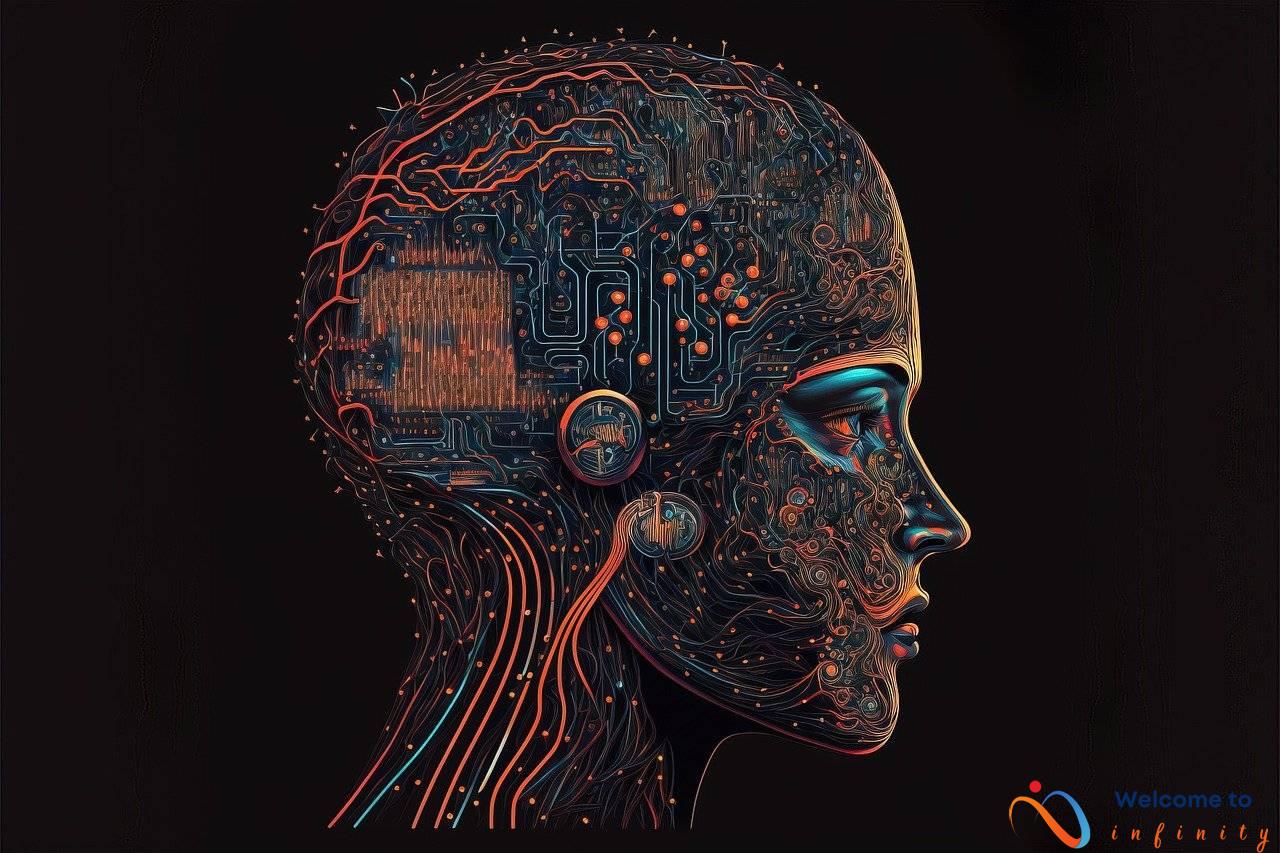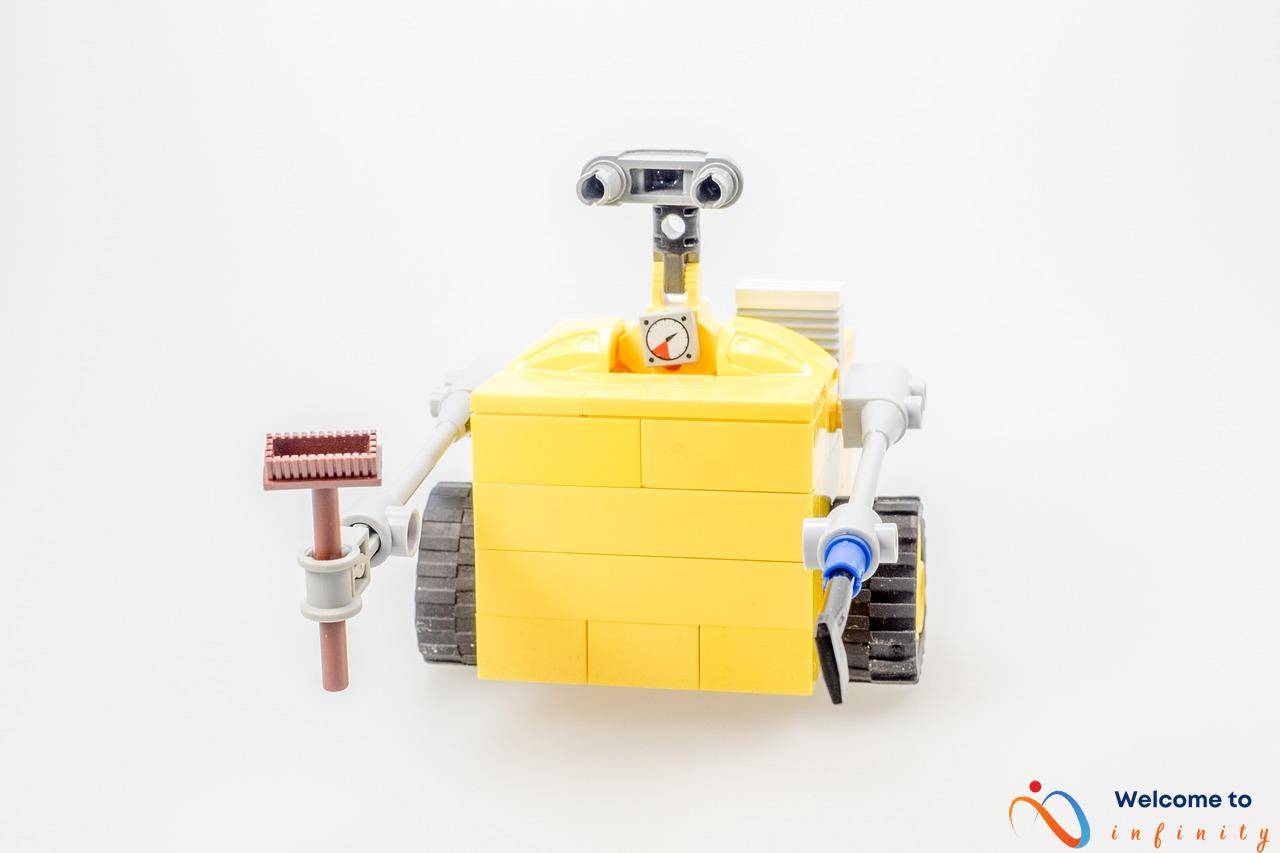Autonomous vehicles are rapidly becoming a reality, and machine learning plays a significant role in the development of these advanced vehicles. One of the critical areas where machine learning is used in autonomous vehicles is in perception and control systems, which enable safe and efficient driving.
Perception systems in autonomous vehicles rely on sensors such as Lidar, radar, and cameras to identify and classify objects in the vehicle's environment. Machine learning algorithms process the data collected from these sensors to recognize and track objects on the road, including other vehicles, pedestrians, and traffic signs.
In Lidar and radar systems, machine learning is used to detect the distance and relative speed of objects, while cameras capture and analyze images to detect objects using image processing techniques. These and other sensor technologies work together with machine learning algorithms to create a comprehensive picture of the vehicle's surroundings.
Control systems in autonomous vehicles use machine learning algorithms to make real-time decisions and actions that drive the vehicle. Behavioral planning in autonomous vehicles is one area where machine learning is used to improve their performance by enabling them to anticipate and react to road conditions and obstacles.
Real-time decision making is another critical area where machine learning plays a significant role in safe driving. Machine learning algorithms can process large amounts of data in real-time, enabling vehicles to make quick decisions and avoid accidents.
While the development of machine learning algorithms for autonomous vehicles is promising, there are still challenges that need to be addressed. The quality of data and safety are among the most critical challenges, as they impact the accuracy, reliability, and performance of autonomous vehicles. The integration of machine learning with other emerging technologies is another area of research that offers exciting possibilities for the future of autonomous vehicles.
Perception Systems
Perception systems in autonomous vehicles are designed to provide information about the vehicle's surroundings to enable safe and efficient driving. These systems use various sensors, such as lidar, radar, and cameras, to detect and classify objects in the vehicle's environment. The data collected by these sensors is analyzed by machine learning algorithms to make decisions on the vehicle's movements.
For example, lidar and radar systems use machine learning algorithms to accurately identify and track objects such as pedestrians, other vehicles, and obstacles on the road. These sensors emit signals and use machine learning algorithms to analyze the data returned to the sensor to determine the distance, speed, and position of the objects, which enables the vehicle to make decisions on how to avoid them.
Similarly, cameras are also used to capture images of the vehicle's surroundings, and machine learning algorithms are used to process these images to detect and classify objects such as road signs, traffic lights, and lane markings. Machine learning algorithms can accurately recognize patterns in these images to provide a 360-degree view of the vehicle's environment and enable safe driving in changing road conditions.
- Perception systems in autonomous vehicles enable the vehicle to detect and avoid obstacles in real-time, reducing the risk of accidents.
- Machine learning algorithms are used to accurately detect and classify objects in the vehicle's environment, improving the vehicle's decision-making capabilities.
- The use of sensors such as lidar, radar, and cameras, and machine learning algorithms, allow the vehicle to achieve a 360-degree view of its environment, enabling safe and efficient driving.
Lidar and Radar Systems
Lidar and radar systems are essential components of perception systems in autonomous vehicles. The term LiDAR stands for Light Detection and Ranging, which uses light waves to detect objects. In contrast, the acronym RADAR stands for Radio Detection and Ranging, which uses radio waves. Both systems work together with machine learning techniques to enhance object recognition and tracking in autonomous vehicles.
The LiDAR system uses laser beams to emit light waves, which bounce back when they strike an object. The time taken for the light waves to return to the sensor helps calculate the distance between the vehicle and the object. The radar system, on the other hand, uses radio waves to detect objects and their distance. The machine learning algorithms then process this information to identify and classify objects on the road.
By using both Lidar and radar systems, autonomous vehicles can gather data about their surroundings more accurately, which improves their ability to make safe driving decisions. Machine learning algorithms help the vehicle recognize objects, such as other vehicles, pedestrians, cyclists, traffic lights, and signs. By continuously processing this data, the vehicle can predict the movement of these objects, making it easier to avoid collisions and drive efficiently.
- Lidar and radar systems work together with machine learning techniques to enhance object recognition and tracking in autonomous vehicles.
- Lidar uses laser beams to detect objects, while radar uses radio waves.
- Machine learning algorithms help identify and classify objects, making it easier to avoid collisions and drive more efficiently.
Image Processing
Image processing is an essential part of perception systems in autonomous vehicles. Cameras are used to capture images of the vehicle's surroundings, and machine learning algorithms process them to detect objects on the road. The cameras mounted on the vehicle provide a continuous stream of images that are analyzed to provide a detailed understanding of the environment.
The machine learning algorithms used in image processing use advanced techniques such as object detection, segmentation, and image recognition to identify and classify objects in the vehicle's surroundings. These algorithms analyze every pixel of the image to detect features such as edges, corners, and curves, which are then used to identify objects such as cars, pedestrians, and traffic signs.
The recognition of objects is a critical function for autonomous vehicles as it allows them to understand the environment and make appropriate decisions. For example, an autonomous vehicle can detect and identify a pedestrian crossing the road and adjust its speed and direction to avoid a collision.
The use of machine learning in image processing for autonomous vehicles is continually improving, with ongoing research improving the accuracy and speed of object detection and recognition. The use of deep learning techniques such as convolutional neural networks (CNNs) has significantly improved the performance of these algorithms, making them more efficient and effective.
However, there are still challenges that need to be addressed in image processing for autonomous vehicles. One such challenge is the ability to detect objects in poor lighting conditions, such as at night or in adverse weather. Researchers are continually working to improve the performance of these algorithms to ensure the safety and efficiency of autonomous vehicles in all conditions.
Control Systems
Autonomous vehicles are equipped with advanced control systems that allow them to operate without human intervention. These control systems use a combination of sensors, processors, and algorithms to gather and process data about the vehicle's environment in real-time. Machine learning algorithms are an essential part of the control systems in autonomous vehicles as they help in decision making and driving actions.
The main objective of using machine learning in these systems is to improve the autonomy of the vehicle by enabling it to make decisions based on the data gathered from its surroundings. The algorithms used in these systems are designed to learn from the data gathered by the sensors and make decisions based on that learning. They can also adjust their behavior based on the changes in the vehicle's environment.
One of the main advantages of using machine learning algorithms in control systems is that they can help in real-time decision making. This means that the algorithms can analyze the data gathered by the sensors and make decisions regarding steering and speed in real-time. Machine learning algorithms can also help in predicting potential hazards on the road, such as pedestrians or other obstacles, and alert the driver or take corrective action to avoid them.
- Table 1: Advantages of using machine learning in control systems
| Advantages | Description |
|---|---|
| Real-time decision making | Machine learning algorithms can analyze data and make decisions in real-time |
| Predictive capabilities | Algorithms can predict potential hazards and take corrective action to avoid them |
| Improved performance | Using machine learning in control systems can improve the performance of the vehicle on the road |
In addition to real-time decision making, machine learning algorithms can also help in behavioral planning. Behavioral planning involves determining the best course of action for the vehicle based on the data gathered by the sensors. Machine learning algorithms can analyze this data and determine the best course of action based on the current situation. This can help in reducing the risk of accidents and improving the overall performance of the vehicle on the road.
Overall, the use of machine learning in control systems is an essential aspect of autonomous vehicles. It enables them to operate safely and efficiently on the road and can help in reducing the risks associated with human error. While there are still challenges that need to be addressed, the future of autonomous vehicles looks bright with the continued integration of machine learning technology.
Real-time Decision Making
Real-time decision making is an essential component of autonomous vehicles for safe driving. Machine learning algorithms are used to analyze the data collected from sensors and cameras to make driving decisions in real-time. These algorithms enable the vehicle to identify potential hazards and take the necessary actions to avoid accidents.
One of the key advantages of using machine learning in decision making is that it allows autonomous vehicles to learn from their past experiences and continually improve their driving performance. The algorithms analyze data from sensors, such as lidar and radar, to identify potential hazards on the road. The data is then processed in real-time to determine the best course of action to avoid an accident.
Another way machine learning helps in real-time decision making is by providing accurate and reliable predictions of road conditions. For example, if the vehicle is approaching a turn, the algorithms can analyze the vehicle's speed and angle to predict the safest course of action to take. This enables the vehicle to take proactive measures to avoid any obstacles and navigate the road safely.
Machine learning is also used in predictive modeling to identify potential hazards before they occur. This enables the vehicle to take preventive measures to avoid accidents and keep the occupants safe. For example, if the algorithms predict that a pedestrian is likely to cross the road ahead, the vehicle can adjust its speed and trajectory accordingly.
In summary, machine learning algorithms play a critical role in real-time decision making for safe driving in autonomous vehicles. They enable the vehicle to analyze data from various sensors and make the necessary driving decisions in real-time. With the continuous improvement of these algorithms, autonomous vehicles are becoming smarter and more capable of navigating the complex road environment.
Behavioral Planning
Autonomous vehicles not only need to perceive their environment but also need to make decisions based on their perception to navigate safely and efficiently on the road. Behavioral planning is a crucial part of the control system in autonomous vehicles, where a set of actions is determined based on the perception of the vehicle's surroundings. Machine learning algorithms are used to improve the performance of behavioral planning.
Machine learning algorithms are used to analyze large amounts of data generated by the sensors of autonomous vehicles, including cameras, Lidar, and radar systems, to identify patterns in the driving behavior of the vehicles. The algorithms use this data to make decisions about the actions that the vehicle should take in different situations, such as stopping at a red light or changing lanes on the highway.
One of the major challenges in behavioral planning is predicting the behavior of other drivers on the road. Machine learning algorithms are used to analyze the behavior of other vehicles, cyclists, and pedestrians on the road to predict their movements and take necessary actions accordingly. This helps in improving the safety of autonomous vehicles on the road.
Another advantage of using machine learning in behavioral planning is the ability to optimize the driving behavior of the vehicle for better performance. The algorithms can learn from past driving experiences and adjust the driving behavior of the vehicle accordingly. This improves the efficiency of the vehicle and reduces the risk of accidents on the road.
In conclusion, machine learning algorithms play an important role in the behavioral planning of autonomous vehicles, improving safety and efficiency on the road. As the technology continues to advance, we can expect to see further improvements in the performance of autonomous vehicles in the future.
Challenges and Future Directions
While machine learning has made significant advancements in the field of autonomous vehicles, there are still several challenges that need to be addressed. One major challenge is ensuring data quality and safety, as autonomous vehicles rely heavily on accurate data to make driving decisions. This has led to the development of new data collection techniques, such as crowdsourcing and simulation, to improve data quality and safety.
Another challenge is the integration of machine learning with other emerging technologies, such as blockchain and 5G. This integration can improve the functionality of autonomous vehicles by providing faster and more secure data transfer and communication. However, it also presents new challenges in terms of system complexity, data privacy, and security.
Future directions for machine learning in autonomous vehicles include the development of more advanced perception and control systems. For example, researchers are exploring the use of deep learning algorithms to create more accurate and adaptable perception systems. Additionally, there is a push towards more customized and personalized driving experiences through the use of machine learning.
- Challenges: Data quality and safety
- Future Directions: Advanced perception and control systems
In conclusion, machine learning is rapidly changing the landscape of autonomous vehicles. Although there are still challenges to overcome, the future of this technology looks promising as researchers continue to develop new and innovative solutions.
Data Quality and Safety
Data quality and safety are crucial components in the development of machine learning algorithms for autonomous vehicles. With autonomous vehicles relying on machine learning algorithms to make real-time decisions, the accuracy and reliability of the data they are fed plays a significant role in ensuring the safety of passengers and other road users.
Developers must ensure the quality of their data by sourcing from reliable and diverse sources. This helps to minimize bias and ensure a broad representation of road conditions and obstacles. High-quality data must also account for the continually evolving nature of the driving environment, such as changes in weather and road construction.
Safety is also a primary concern when it comes to machine learning algorithms. Autonomous vehicles must be equipped with failsafe mechanisms to prevent risky driving decisions and avoid accidents. This includes the incorporation of redundant systems and regular testing of the machine learning algorithms to ensure they are functioning correctly.
Furthermore, the integration of security measures is necessary to protect the data used in autonomous vehicles. With the highly sensitive nature of this data, a breach could have severe consequences. The implementation of cryptographic methods for data transmission and storage is necessary for the safety, privacy, and security of the passengers and the vehicle itself.
The importance of quality data and safety measures cannot be overemphasized in the development of machine learning algorithms for autonomous vehicles. These two factors are critical for ensuring safe and efficient driving for autonomous vehicles, and the continued development of these technologies will require the utmost attention to data quality and safety protocols.
Integration with Other Technologies
The integration of machine learning with other emerging technologies can bring numerous improvements to the functionality of autonomous vehicles. For instance, machine learning can be combined with advanced sensors and computer vision technologies to improve the accuracy and speed of object detection in the vehicle's environment.
In addition, the integration of machine learning with connectivity technologies such as 5G can enable vehicles to communicate with other vehicles and the infrastructure in real-time, allowing for more efficient coordination of traffic flow and enhanced safety on the road.
Furthermore, machine learning can be integrated with edge computing technologies to reduce latency in decision-making processes within the vehicle's control systems. This means that decisions regarding driving actions can be made with greater speed and accuracy, ultimately leading to safer and more efficient driving experiences for passengers.
Other technologies that can be integrated with machine learning include natural language processing and gesture recognition, which can enable passengers to interact with the vehicle's control systems in more intuitive and natural ways. Additionally, technologies such as augmented reality can provide informative and engaging displays to enhance the driving experience.
In summary, the integration of machine learning with other emerging technologies holds the potential to greatly improve the functionality, safety, and overall driving experience of autonomous vehicles. As the development of autonomous vehicles continues to progress, it will be important to explore the various ways in which machine learning can be effectively integrated with other technologies to achieve these goals.











